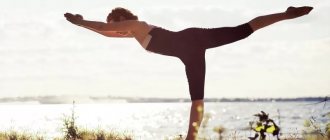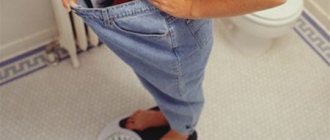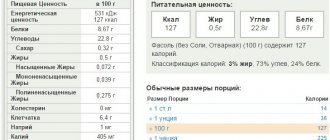What are the benefits of Pilates?
This discipline develops the body comprehensively. “Training develops conscious control of your body and coordination,” says Diana Ibragimova, trainer of the Fitness Territory network of clubs and author of the Instagram blog @di.fitt. - Thus, during training, not only the muscles work, but also the mind.
These are rehabilitative classes, so they are ideal for everyone, including beginners.” In terms of its impact on muscles, Pilates helps strengthen the core area. “And this is the key to safe movement in life and in training, as well as good posture. The muscles of the back and abdomen become strong and beautiful,” adds Diana Ibragimova.
Also, regular Pilates classes develop grace and smooth movements. “The effect of stretching and strengthening muscles. Together, this contributes to the balanced development of the body, strength and grace,” notes Diana Ibragimova.
Of course, all these bonuses can only be obtained if you practice according to the rules and perform the exercises correctly.
Mind and body
Pilates is often called the closest relative of physical therapy. It is a harmonious combination of Eastern and Western practices aimed at healing the body. Pilates is based on exercises from yoga, qigong breathing exercises and other oriental systems.
Yoga or Pilates: what is the difference and what to choose?
Read more
The big advantage of Pilates is that during each session almost all muscle groups are worked out. The exercises of the system are aimed at maintaining general muscle tone, developing correct posture, flexibility, and improving coordination of movements.
Article on the topic
Home exercise equipment: how to choose a mat, hula hoop and dumbbells
Pilates involves the harmonious interaction of mind and body. During the lesson, it is important to fully concentrate on the instructor’s recommendations; all exercises must be performed consciously, carefully monitoring your breathing and your sensations.
Pilates can be done individually or in a group. Conventionally, it is divided into 3 types:
- Pilates mat, when exercises are performed on the floor;
- Pilates with equipment - rings, balls, rollers;
- Pilates on a special machine.
Due to the fact that there are exercises that do not require special equipment, you can conduct classes at home, on your own.
Yoga: what are asanas, prana and what are the benefits of practice?
Read more
Pilates for beginners: where to start?
Unlike other, more energetic types of exercise, Pilates involves smooth movement, a special type of breathing and maximum concentration on the work of the target muscles. This is exactly what beginners often have difficulty with.
Therefore, the first step in Pilates should be to master the basic rules of the discipline (such as breathing patterns) and change movement habits. “The main task for beginners in Pilates is to restore the correct movement patterns anatomically,” says Anastasia Yurkova, master trainer of the X-Fit group programs in Russia.
Most of us have certain postural disorders and movement patterns developed on their basis (most often incorrect). We slouch, “lean” to one side, and sleep in approximately the same position. Pilates classes allow you to master more correct movement patterns and improve posture. But when mastering them, it is important to avoid automatism; you need to “teach” the body to move according to new patterns.
This is what Pilates exercises for beginners are aimed at. “Beginners need exercises that allow them to normalize and restore the pattern of movement in all planes. We are required to perform movements lying on our backs, on our stomachs, and to the side - this way we use all the main joints and directions of movement,” explains Anastasia Yurkova.
It is also important for beginners to master the neutral position of the spine. “We all have postural disorders, there are some habits in the way we sit, lie, skewed to one side, in hyperlordosis or stoop,” says Anastasia Yurkova. “This is not the correct anatomical position; there is no need to move in it.” This is dangerous for the musculoskeletal system. The first step is to teach the body this neutral position.”
Among the exercises recommended for beginners, experts especially highlight lightweight versions of the classic movements of the discipline. “These include “pelvic clock”, “hundred”, shoulder bridge, one leg circles, one leg stretch, exercises lying on the side and on the stomach, back rolls, saw, roll up-roll down, “pendulum”, lists Diana Ibragimova.
Rational balanced nutrition and Pilates
In a healthy person, three principles are organically combined - Physical, Intellectual (Consciousness, Reason) and Spiritual (Emotional, Moral). Through the 6 core principles of Polestar Pilates, we achieve balanced movement through the entire body structure, which ensures a balanced flow of energy throughout all energy systems. In energy medicine, where body, mind and spirit are one, the movement of the structure is the movement of the entire system.
By adding to this a system of rational, balanced nutrition, two very important things will unite and resonate - Nutrition and Movement. Nutrition and Movement are the fundamental foundations of human health.
There are many different nutrition concepts now; I personally adhere to a system of rational, balanced nutrition.
What is the essence of a balanced diet?
The World Health Organization has divided all nutrients into 5 groups:
- Bread, flour products, cereals;
- Fruit;
- Vegetable;
- Milk, dairy products, cheese;
- Meat products, poultry, fish, legumes, eggs and nuts.
It turns out that our daily diet should contain products from all 5 groups of nutrients, this ensures a balanced diet.
How can we apply all this in life? I recommend following three simple rules.
Rule 1 : 4 meals a day.
Let's take a closer look at Breakfast. The optimal time for breakfast is considered to be from 7-9 am. For breakfast, I recommend eating porridge with milk, oatmeal buckwheat (not instant), you can also add 10-20 grams of nuts
2nd breakfast is around 10-11 o’clock: cottage cheese with dried fruits (raisins, dried apricots, prunes) or kefir
Lunch from 13-15: first course, salad, side dish with meat.
Dinner from 18-20: vegetables, a little side dish, no fatty meat, preferably poultry or fish.
Rule 2 - you should eat 70% of your total daily diet before 15-16 hours. This is an objective parameter, and it is associated with the biological rhythms of the human body. Man is built into the biological system of the universe and obeys its laws, and not vice versa.
Rule 3 - Be sure to drink water 10-15 minutes before meals and 30-40 after, so as not to interfere with the process of assimilation of food during meals.
We have provided ourselves with a balanced diet. Move! Start with simple exercises, get the first results, and very quickly you will start to like this process because it improves your health and gives you more vitality.
Pilates for weight loss
Pilates, like any other training system, leads to a post-workout increase in metabolic rate. Unfortunately, this is where the “fat burning” properties of Pilates end. But other advantages of the system begin, such a very strong advantage as deep muscle training.
It is very difficult to overestimate the importance of proper work of deep muscles. Deep muscles are needed for the full functioning of the spine. If your spine is not mobile and stable enough, then what kind of weight loss training can we talk about?! You must, at a minimum, prepare yourself to adequately “withstand” everyday stress, which sometimes exceeds training loads many times over.
In our studio you will receive a complete set of health, competent training with a personal trainer and a balanced nutrition system.
Take your first step towards a healthy and happy life! Health is the main benefit of life.
Pilates: workout for beginners for 20 minutes
We asked Anastasia Yurkova to compose and show us a set of Pilates exercises for beginners. “These movements help to master the basics of Pilates,” says Anastasia Yurkova. “In the beginning, it is important to pay attention to learning the correct movement pattern, neutral posture, and breathing pattern.”
How to build a lesson
- Start your workout with a light warm-up.
- Perform the exercises sequentially at a slow pace. “I usually recommend performing each exercise 8-15 times, doing it slowly, so that at every moment of movement you are aware of the work of the muscles,” says Anastasia Yurkova. — Focus not on the quantity of movements, but on their quality. It’s better to make 5 movements, but high-quality ones. If on the sixth movement I feel that I’m already starting to help myself, to engage other muscles, then that’s it, I don’t do it anymore.”
- Do this program 3-4 times a week. “If you wish, you can do it more often, since the training is not too intense,” notes Anastasia Yurkova.
To complete the complex you only need a mat.
Simplified "hundred"
1-lying body raise
Lie on your back, bend your knees, place your feet on the floor. Place your fingers together at the back of your head and keep your lower back in a neutral position. Smoothly lift your shoulders, shoulder blades and the back of your head up, actively working your abdominal muscles. Relax your neck. Stay in this position for 10-15 seconds , then lower down.
Shoulder bridge
2-arm bridge
Lie on your back, bend your knees, place your feet on the floor. Stretch your arms along the body, rest on your shoulders, the back of your head, and your feet. Smoothly lift your pelvis above the floor, aligning your spine in one straight line and actively working your abdominal and buttock muscles. Then smoothly lower your pelvis and body down, laying vertebra by vertebra on the floor. Do not make sudden movements. This is one repetition, do 8-15 of these .
Lying crunches
3-lying crunches
Lie on the floor, bend your knees, place your feet on the floor. Stretch your arms to the sides, placing your palms on the floor. Turn your left knee to the side and place your left foot on your right knee. Maintain a neutral spine position. From here, slowly lower your right leg to the right, touching your thigh and left foot to the floor. Keep both shoulders pressed to the floor and move by twisting your thoracic spine. Then smoothly return to the starting position. This is one repetition, do 8-15 of these . Then do the same in the other direction.
"Rolls"
4-rolls lying down
Lie on your back, stretch your legs up, pressing your lower back to the floor. Place your hands behind your head. Smoothly twist your body forward, raising your shoulder blades above the floor, actively working your abdominal muscles. Then move your palms to your thigh muscles, smoothly round your spine, roll your body forward and sit down. Stretch your crown upward. Then smoothly round your back, “roll” backwards on your pelvic bones and lower your spine to the floor. Raise your legs up, put your hands behind your head again. This is one repetition, do 8-15 of these .
Arm rotation while lying on your side
5-rotation in the thoracic region
Lie on your right side, place your right arm behind your head, bend your knees slightly. Keep your lower back neutral and your abdominal muscles slightly toned. Extend your left arm upward and move it in a wide circle back, opening your chest. This is one repetition, do 8-15 of these in each direction. Don't slouch, don't lean your body forward or backward.
"Swan"
6-swan
Lie on your stomach with your arms extended in front of you. Pull the toes of your feet away from you. Maintain a neutral position in your lower back while actively working your abdominal and back muscles. Stretch your neck, direct your gaze to the floor. Smoothly lift your right arm and left leg above the floor. Then lower them and raise your left arm and right leg. This is one repetition, do 8-15 of these. Don't arch your lower back or slouch.
Lifting the body
7-body lift
Lie on your stomach with your arms in front of you, elbows slightly bent and resting on your forearms. Place your forehead on the floor. Pull the toes of your feet away from you. Maintain a neutral position in your lower back while actively working your abdominal and back muscles. Smoothly lift your head above the floor, then your neck, shoulders and upper back. Then just as smoothly and consistently lower the body to the floor. This is one repetition, do 8-15 of these.
"Wave"
8-wave
Get down on your knees and place your shins on the floor. Place your palms under your shoulders. Then lower your pelvis onto your heels, extend your arms, press your stomach to your thighs. Then smoothly move your body forward, pushing up your lower back and thoracic spine, and at the extreme point of the movement, pull your shoulder blades up. Smoothly return to the starting position. This is one repetition, do 8-15 of these.
At first it may be difficult for you to move slowly and engage the target muscles, but after three or four sessions everything will work out.
However, mistakes that beginners usually make can disrupt the effectiveness of these exercises.
Pilates system
The basic principles of the complex were developed back in the last century by Joseph Pilates. Today, many celebrities, singers, musicians and dancers use this exercise system to maintain good body shape. The author called his system controlology, that is, mental control of muscle condition. This is the essence of Joseph's technique.
Simply doing exercises without internal focus on each muscle group and proper breathing will not give good results. Joseph believed that when a person manages to achieve freedom of movement, he will be able to have good control over individual areas of his body, and therefore greater goals in life.
However, the main goal of Pilates is to restore the elasticity of muscle fibers, improve health and effectively reduce weight to a normal level.
The famous complex is based on the principles of ease and accessibility for any category of people. All normal people with an average level of health and average body weight can train according to the Joseph Pilates method. People who are severely overweight need to first undergo a course of medical therapy and reduce their weight to an average level, and then continue the dynamics with the help of a complex and strength training.
Contraindications for Pilates
Anyone can do Pilates. If you have any doubts related to advanced age, heart condition, or serious illnesses, consult your doctor. But remember that the doctor must understand what the Pilates system is and not put it on the same level as other physical activity systems. After all, we have already discussed above how the Pilates system differs significantly from aerobics or shaping, which not everyone can do.
Don't hold your breath while doing the exercises. This way you will burn extra pounds faster because your body will receive enough oxygen. Exercises should not be done inconsistently or with incorrect technique, otherwise you risk harming yourself. Every moment of technique is essential, even if you don't think so. Avoid jerking and sudden changes in position. If you feel unwell during class, immediately inform the trainer. If you are training at home and feel sick, call for help and call an ambulance.
Pilates for losing weight
With the help of training you can regulate your body weight. The weight will slowly but surely and irrevocably decrease. Improved blood circulation, which enhances metabolic processes in the body, leads to effective burning of fat deposits.
Deep breathing provided by the complex also has a positive effect on the functioning of all internal organs, which will certainly lead to a balance in body weight. By supplementing the complex with strength exercises, you can speed up the fat burning process.
There are contraindications for practicing this method. It is not recommended to engage in the complex: after undergoing operations, in old age or with a lot of weight.
Who is the Pilates complex suitable for?
This set of exercises is suitable for women and men, girls and boys. There are no age restrictions, just as physical fitness is unimportant. Pilates will solve the following problems:
- stress
- back pain
- osteoarthritis
- osteoporosis
- spinal injuries
- neurological headaches
- recovery from severe injuries
- obesity
Pregnant women can also do Pilates. The system will help tone the muscles of the pelvis, abdomen, and back, so that after childbirth you can restore your previous figure in a short time.
Pilates effect:
- getting rid of negative emotions and thoughts
- rejuvenation of the body as a whole
- a surge of strength, a desire to act
- lack of sleepiness during the daytime (with regular exercise for at least 8 months)
Practitioners claim that Pilates affects brain function and memory.
The impact of training on the human body
Pilates has a positive effect on the organs and systems of the body:
- aligns the natural state of the spine;
- eliminates bad physiological habits such as stooping, curvature of the spine, etc.;
- restores the muscular balance of the body, stabilizing the position of organs in the abdominal cavity;
- deep breathing is restored;
- good sleep is established;
- lowers blood pressure;
- regulates the activity of the cardiovascular system;
- reduces body weight and volume.
To practice the complex, there is no need for additional equipment or exercise equipment, and you do not need a gym. There is absolutely no limitation on training time. All that is needed is the desire of the person himself to improve his appearance and health, as well as persistence and regularity in training.











